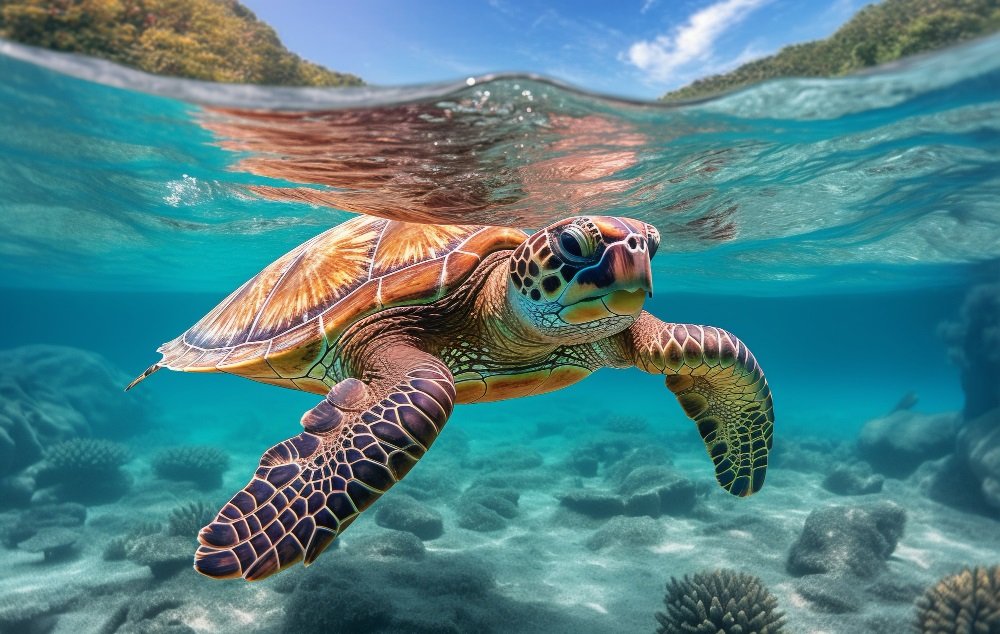Understanding the needs of baby turtles is crucial for their healthy development and survival. These tiny creatures face numerous challenges in their early life, and providing them with the right environment and care can make a significant difference.
What Do Baby Turtles Like?
Baby turtles, also known as hatchlings, require specific conditions and care to thrive. From their diet to their habitat, every aspect of their environment plays a role in their well-being. This overview will explore the key elements that baby turtles need to flourish.
Habitat
Baby turtles need a safe and stimulating habitat that mimics their natural environment. This includes a shallow water source for swimming and basking areas with appropriate heat lamps for thermoregulation.
Diet
A balanced diet is essential for the growth and development of baby turtles. Their diet should consist primarily of insects, worms, and small crustaceans, supplemented with occasional fruits and vegetables.
What Do Baby Turtles Like?
Baby turtles, also known as hatchlings, are fascinating creatures with unique needs and preferences. Understanding what they like can help you provide the best possible care for these tiny reptiles. From their diet to their environment, there are several key aspects to consider when caring for baby turtles.
Diet
A hatchling’s diet is crucial for their growth and development. They are primarily carnivores and require a diet rich in protein.
Food Options
- Insects: Small insects like crickets, mealworms, and earthworms are excellent protein sources.
- Fish: Small, feeder fish like guppies or minnows can be offered in moderation.
- Commercial Turtle Pellets: High-quality turtle pellets formulated for hatchlings provide a balanced diet with essential nutrients.
- Vegetables: A small amount of chopped leafy greens, such as dandelion greens or collard greens, can be offered as a supplement.
It’s important to avoid feeding baby turtles foods that are high in fat or sugar, as these can be harmful to their health.
Feeding Frequency
Baby turtles have high metabolisms and need to eat frequently. They should be fed 2-3 times per day, or even more often if they are very small.
Environment
Creating a suitable environment for baby turtles is essential for their well-being. They need a space that is both safe and stimulating. (See Also: Where Do Leatherback Sea Turtles Migrate)
Tank Size
Baby turtles require a relatively small tank, but it should still be large enough for them to swim and explore comfortably. A 10-gallon tank is a good starting point for a single hatchling.
Water Quality
Clean, fresh water is crucial for baby turtles. The water should be changed regularly to prevent the buildup of ammonia and other harmful substances.
Basking Area
Baby turtles need a basking area where they can dry off and regulate their body temperature. A flat rock or platform placed near the water’s edge is ideal.
Temperature and Lighting
Baby turtles require a warm basking spot with a temperature of around 85-90 degrees Fahrenheit. The water temperature should be around 75-80 degrees Fahrenheit. A UVB light is also essential for their health, as it helps them synthesize vitamin D3.
Substrate
The substrate at the bottom of the tank should be safe for turtles to walk on and should not be ingested. Gravel or sand are good options.
Socialization and Enrichment
While baby turtles are not typically social animals, they do benefit from some level of enrichment.
Tank Mates
It is generally not recommended to house baby turtles with other species, as they may be seen as prey or compete for resources.
Enrichment Items
Providing enrichment items, such as floating logs, rocks, or plants, can help keep baby turtles stimulated and entertained. (See Also: What Do Hawksbill Sea Turtles Look Like)
Handling
Baby turtles are delicate creatures and should be handled with care.
Always wash your hands thoroughly before and after handling a baby turtle to prevent the spread of bacteria.
Support the turtle’s body weight evenly when holding it.
Avoid squeezing or dropping the turtle.
Health
Baby turtles are susceptible to various health problems. It is important to be aware of the signs of illness and to seek veterinary care if necessary.
Common Signs of Illness
- Loss of appetite
- Lethargy
- Diarrhea or constipation
- Respiratory problems
- Skin lesions
If you notice any of these signs, it is important to consult with a veterinarian who specializes in reptiles.
Recap
Caring for baby turtles requires attention to their diet, environment, socialization, handling, and health. Providing them with a balanced diet, a clean and stimulating environment, and proper handling can help ensure their growth and well-being. By understanding their needs and being attentive to their health, you can provide a loving and nurturing home for these fascinating creatures. (See Also: Do Turtles Eat Insects)
Frequently Asked Questions about Baby Turtles
What do baby turtles eat?
Baby turtles, also known as hatchlings, are omnivores and their diet consists mainly of small insects, worms, snails, and soft fruits. As they grow, their diet will gradually shift to include more vegetation.
How often should I feed baby turtles?
Baby turtles have high metabolisms and need to be fed frequently. Offer them food 2-3 times per day, ensuring they eat all the food within 15-20 minutes.
What kind of water do baby turtles need?
Baby turtles need clean, dechlorinated water to swim in. You can use a water conditioner to remove chlorine from tap water. The water should be shallow enough for them to easily reach the bottom.
Do baby turtles need a basking area?
Yes, baby turtles need a basking area where they can regulate their body temperature. Provide a flat rock or platform that is heated with a heat lamp or basking bulb.
How can I tell if my baby turtle is healthy?
A healthy baby turtle will have bright eyes, clear skin, and an active appetite. They should also be swimming and basking regularly.


